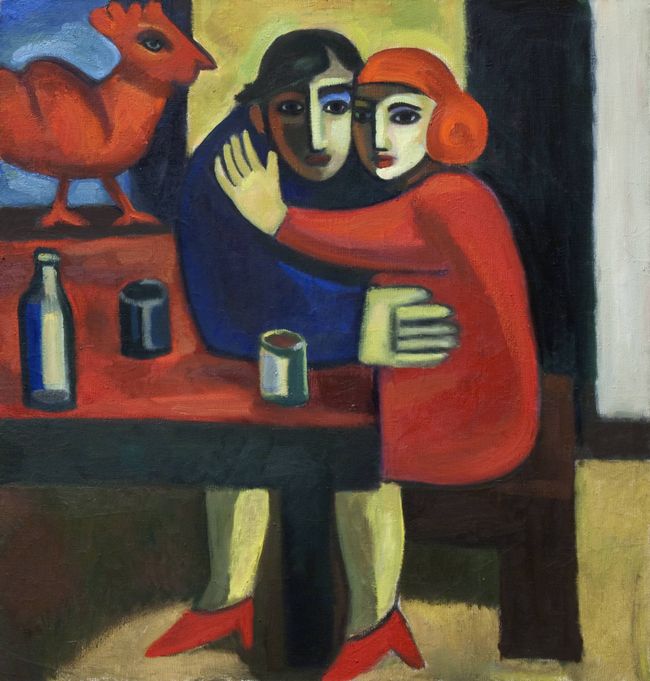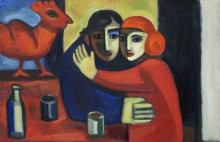As part of the international festival LvivKlezFest in Lviv, Oksana Bondaruk’s culture and art center “Art-e-fakt galereYA” has hosted a solo photo exhibit of Illia Lievin, a professional artist who works in Iryna Shcherbatenko’s genre of microrealism and painting in the style of naive art.
Iryna was born in Lviv to a well-known Shcherbatenko art family. Her father Yurii, who was born in Sochi, Krasnodar Territory, Russia, and studied at the Kyiv Art Institute in the class of the well-known artists Fedir Krychevsky and Kost Yeleva, and mother Vira, a self-taught primitivist, were the artists whose works and trends did not always fit in with the method of “socialist realism” cultivated in the 1960s. They preferred European “bourgeois” art banned by the Communist Party and League of Artists functionaries.
At that very time – the period of “Khrushchev’s thaw” in 1960-62 – the Iskusstvo publishing house republished History of Impressionism and Postimpressionism by John Rewald, a well-known scholar of French art, which enabled Soviet artists to know more about the late-19th-early-20th-century European art.
As the artist herself reminisced, she “grew on postimpressionism” the principles of which her family adhered to and popularized. Such artistic traditions as emphasis on color and decorative simplicity of forms led Iryna to the clothing design department of the Lviv State Institute of Applied and Decorative Art.
After graduation, she worked at the Promin garment firm. Her clothing design projects took part in Magic Needle fashion competitions.
Together with Tetiana Tarasenko, Ihor Holikov, and Oleksandr Ivanov, Iryna Shcherbatenko organized a studio theater, “Birds of Paradise,” where they staged such original theatrical extravaganzas as art shows of garments with hand-braided and leather insets at the History Museum’s Italian Patio, the House of Scientists, the Les Kurbas Theater, and the House of Organ and Chamber Music in 1996-2001. The shows of conceptual fashion trends turned into the theatrical mini-productions “The Gardens of Passions,” “The Birth of Athena and Other Miracles,” and others.

THE LOVERS / Photo replica courtesy of the author
She began to love painting at a mature age. In the past decade, under the influence of artworks by Vincent van Gogh, Paul Gauguin, and the Pont-Aven school Nabis, the artist has been painting symbolic-synthetic canvases with a tinge of provincial primitivism, such as My van Gogh, Photographer, The Lovers, Conversation, and A Girl with a Goose.
The people depicted on these canvases always have big, pensive, and sad eyes. At the same time, they are full of inner calmness and balance. (The same applies to the artist’s eyes.) These are not just human symbols. These are personalities with various facial colors and features that express all kinds of dispositions.
The genre scenes Klezmers, A Dance, Night Song, After the Wedding, and My Chagall depict the world of Jewish provincial folklore full of lyrical mysticism, anxiety, tragedy, and sincerity of human relations and feelings, or, as the artist herself defines, “the semblance of life is in fact my life.”
The two-dimensional treatment of a clearly-outlined form, a spontaneous and originally shaped composition, the intensive decorative color of a child’s ingenuous drawing are the distinguishing features of Iryna Shcherbatenko’s naive paintings whose main goal is “to search for love and happiness.”
The current exhibit of the artist’s works, in which you can feel a subtle mixture of recognizable mood-related figures and themes of French painting and Jewish everyday-life scenes, reveals an incredible sincerity of naive art, which reflects an emotional search for one’s own self and the poetry of a daily perception of the surrounding life and a happy love.
Yaroslav Kravchenko is an art critic







